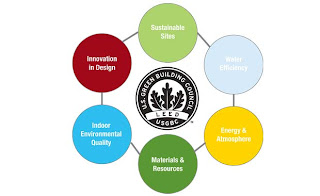LEED Certification
If you do any amount of research into home building or new construction you will see or hear the acronym LEED. The US Green Building Council has developed LEED to certify homes, new construction and commercial building projects to achieve the highest level of quality and practices. LEED stands for Leadership in Energy and Environmental Design. Since it’s development in 1989 it has become the only international standard for green or advanced practices certification.
Although third party certification is not needed to build a green or super efficient building, many choose to use the process to challenge their builder as well as their own choices. You may live in a LEED Platinum home and not have the certification ever completed. Many commercial projects are certified for advertising reasons, and homes are certified for resale reasons. The average certification will cost the project owner about $2,000.
The process from the outside looks really simple, but once you take a closer look, the complexities come out. Basically the system works by earning points. The more points you earn the higher your rating is. Simple right? Not so fast. Below is a brief breakdown of the process:
1. Determine what version of LEED 2009 you will be using. There are 10 versions of the LEED program covering Homes, Schools, Health Care, Neighborhoods and Commercial Construction.
2. The version of LEED that best fits your project will have 6 categories within it. Which include: Sustainable Sites, Energy and Atmosphere, Materials and Resources, Innovation in Design, Water Efficiency and Indoor Environmental Quality. The point values will vary depending on which version you end up using.
3. A meeting will be held with everyone involved in the project to determine what points can be awarded and what steps need to be taken to document those points. The goal of what level of certification is generally set at this meeting (Certified, Silver, Gold or Platinum) Usually your builder, architect, designer and a third party LEED rater will be in attendance.
4. During the building process many regular meetings will be held to assure that the project is staying on track. Some points may fall to budget or specific design criteria. Other points may be added for various reasons. There will also be several site visits by your LEED rater to assure your builder is doing the things necessary to get you to your goal.
5. When the project is complete your builder will supply the LEED rater with all the documentation they will need to certify the project. This process can take as little as a few months and some projects may take years to fully rate.
Categories: LEED


